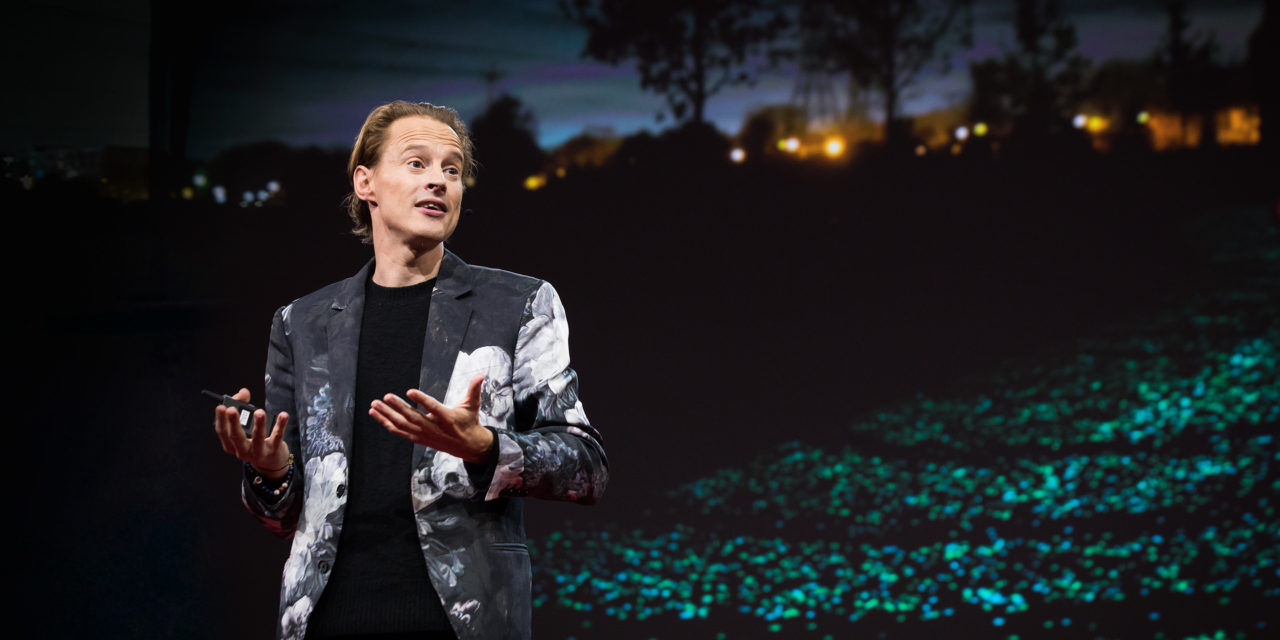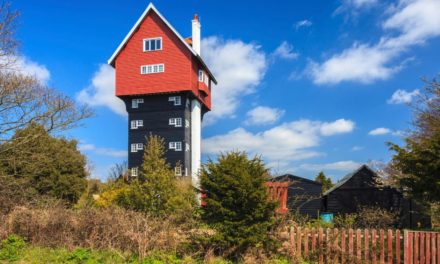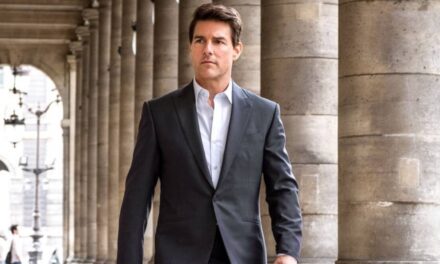Credit: TED
Editor’s Note: Daan Roosegaarde is an innovative and inspiring man whose career has tacked the titles of artist, sculptor, inventor, and environmentalist to his name. But Mr. Roosegaarde does not concern himself with labels– what he cares about is his work. With the Dutch artist’s place of work, Studio Roosegaarde, Mr. Roosegaarde has produced a number of sustainable projects, such as Gates of Light, which works to protect water, energy, and Dutch culture, Waterlicht, which was designed to raise awareness of rising sea levels, and his most famous work, the Smog Free Tower. In this exclusive interview, Mr. Roosegaarde discusses his life, his work, and what it means to him.
Before the Studio
Sophia News: Tell us a little about your background—from your time at Institute for the Arts in Arnhem to your founding of Studio Roosegaarde.
Daan Roosegaarde: I was always driven by curiosity. I often did work in nature and technology to actuate the environment and home. We live below sea level here [in Holland] and we would drown with the rising sea levels. I knew something needed to be done.
It’s all about the taste in mouth. You figure out the right ingredients, and after many years you learn to make one star dessert, and then you build from there to really make something great.
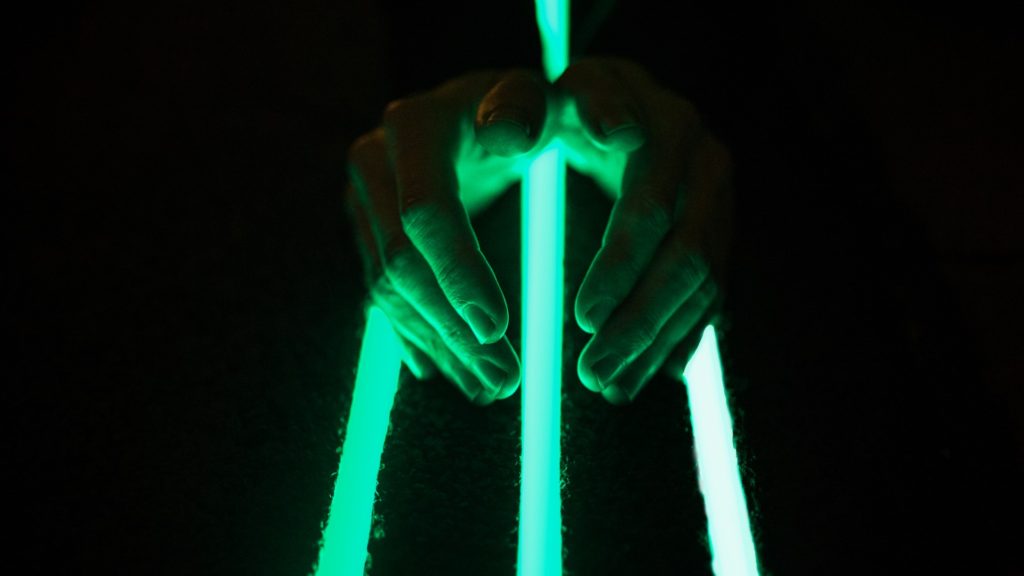
Glowing Lines– Smart Highway Project. Credit: Studio Roosegaarde
SN: When did you first start realize contemporary sculpture was your calling?
DR: The notion of the landscape has always been fascinating to me. I was never at home with museums and all the white boxes and “do not touch” signs. No one really cares much about outdoors, which is fascinating because it is so immensely important to our world. My work is all about interactivity. I suppose I fall into part of the Dutch artists’ tradition of landscape. We have own materials—such as with the Van Gogh and Gates of Light—but nature is still a large part of our projects.
Projects and Focus
SN: The use and bending of light is something you tend to utilize frequently. How do you choose technologies and the relationship between artificial and natural light in your pieces?
DR: Light is communication and information. Stars are not just decoration in the sky, they are information at speed of light. Reflection and refraction are used to promote that connection. It might be artificial or natural, but it’s a connection.
SN: Many of your projects revolve around green energy and a clean future. Would you consider yourself a social sculptor (in the Joseph Beuys sense)?
DR: Yes. It’s all about the imagination of what we look like. We are so ready to blame others for the world’s, and our own problems, instead of offering proposals.
My work is about poetry and imagination, but it is a social agenda as well. We question pollution—why do we have streetlights on all night, why our cities are destroying the landscape. We’re bringing it to a larger scale, which is especially pertinent in countries like China and in our age in general. The work is about protecting the landscape.
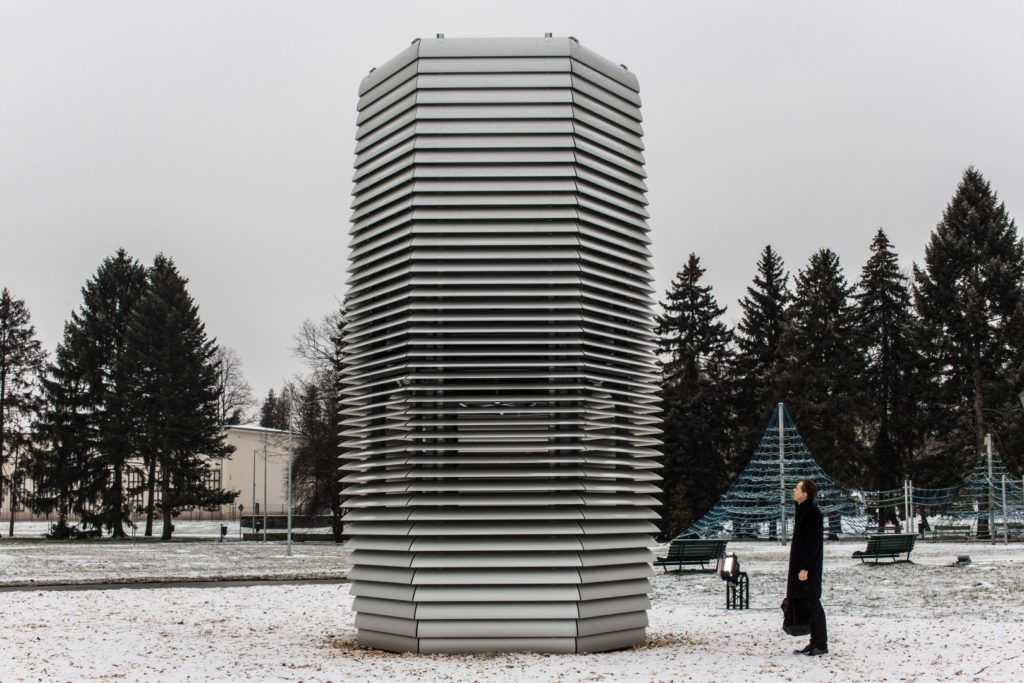
Smog Free Tower. Credit: Studio Roosegaarde.
SN: Perhaps your most well-known project is your Smog-Free Tower. Can you talk to us about the development and execution of that project?
DR: That is a very fascinating project. It started with the dream of clean air. It began in Beijing and China. We realized that the pollution there is really harming us—almost like smoking six or seven packs of cigarettes a day. This is a massive problem in big cities, like Paris, London, and my hometown, Rotterdam. We essentially created large vacuum in some parks that created clean air. This project is the rock in the river creating ripples to a focus on clean air. It’s a first step to clean air everywhere.
The Man Behind the Art
SN: Many refer to you as a designer, architect, an inventor, and an artist. How do you feel about these terms and labels?
DR: I don’t. I really don’t think about them. I’m more interested in exploring than defining. It’s interesting that people try to label. And maybe it’s a good thing, I don’t know, but I’m more about making new connections.
Maybe that’s why it’s difficult to capture a title. Maybe it’s about quality of the work, and everything already exists, but we’re creating new things, and people aren’t sure how to define it.
With the Smog-Free Towers, we realized waste should not exist from the collected emissions. So our solution was to compress carbon into diamonds from clean air. Some people are even using these as their wedding bands, and I see it as a sign of hope. It’s all about making all these weird new connections, like making jewelry out of smog. It’s not so much about defining.
SN: What types of developments in technology most intrigue you or scare you today?
DR: The notion of biomimicry, and learning from biotechnology is incredibly interesting. Our Bioluminescent project with algae is making new waves with light. They are future street lights. It’s a hybrid between nature and technology. There is a big interest with robots and A.I., but we are focused bringing nature to focus. We are all feeding robots with all our screen time, when we should be feeding the landscape, and that is not good.
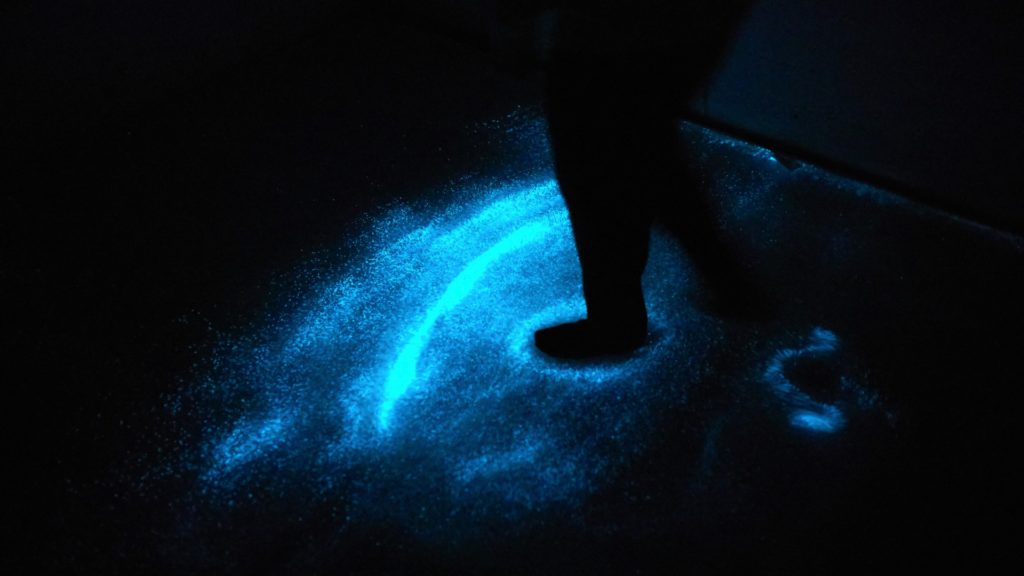
Glowing Nature Project. Credit: Studio Roosegaarde
SN: Which of your projects gave you the most difficulties and which gave you the most fulfillment?
DR: Every project has moments of failure and desperation. It is incredibly complicated to have radical idea and put it out there. People say it’s not possible, and then when it’s done, ask why didn’t you do it sooner. In the end, we see the daylight and put it out there. That is incredibly powerful. It influences what people think is possible. Showing that it can be done inspires new generation for new standard of living and clean. That’s the definition of success—inspiring a new generation.
SN: Does any part of your work as an artist entail entrepreneurship?
DR: Of course, it’s a big part of it. We have a big team. The studio has all these project managers, and designers, and experts. You have to have entrepreneurial mind. Waiting to be discovered doesn’t work. You have to be out there— you have to be a proposal machine and kick them into reality.
SN: Do you have any new projects that you will be releasing soon?
DR: Yes, the Space Waste Lab. There are 29,000 particles in universe caused by us, and no one knows how to clean it. It is smog of universe. We’ve teamed with NASA and ASA to create program to figure out how to fix it and what to do with the waste. It will be launched October 5. It’s a very exciting project that I am looking forward to.
